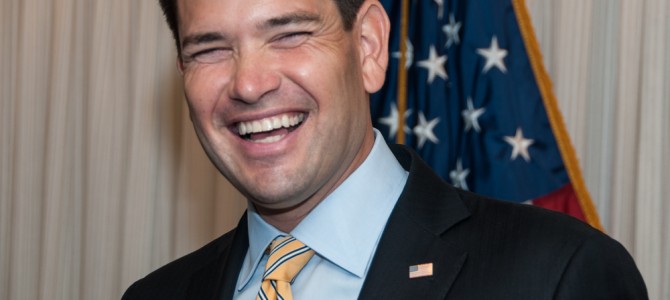
The New York Times’ articles critiquing Sen. Marco Rubio’s spending and driving habits have demonstrated a huge cultural blind spot. Their erroneous focus on Rubio’s finances revealed how a particular monoculture within their institution moved such pieces into print. Anyone who’s had some basic training in cross-cultural differences and appreciating diversity can clearly see where NYT reporters misconstrue Rubio’s choices for his family.
Any expert on diversity is aware of the varied differences in how cultures perceive time. As an Anglo-European focused culture, the New York Times staff heavily applied a monochronic cultural perspective to Rubio’s clearly polychronic outlook. To The Times, life and acquiring goods should be in a singular line, with each purchase begetting the next. The focus on achievement then reward, with little concern for family or community ties, is culturally narrow. Worse, it means that only those with wealth should act as if they have wealth, which will suppress aspiration among those who are not yet wealthy.
One wonders where the New York Times’ staff inherited this perspective. Well, the going theory is that the intense scarcity of decent weather in northern Europe influenced that culture. They developed a sense of time that diverged from that of much of the world to adapt to a harsher environment. Time and urgency became a dominant cultural norm. Rubio, having been raised in sunny Miami within a Cuban polychronic culture, sees life in a less-linear sense. Polychronic thinkers generally live in a world where time is perceived as more abundant. Not surprisingly, this is predominant in cultures that circle the equator. Investments in home and community can often be as important as linear achievement.
Time: A Source of Cultural Conflict
In case you, like folks at the NYT, remain clueless, I’ll use this quick primer to explain common areas where different cultures can inadvertently create conflict by not acknowledging their differences.

As the accompanying article notes, “Polychronic cultures are more conscious of past and present than future. Polychronic cultures include Latin American (e.g., Cuban), Middle Eastern, Asian, French, and Greek cultures (Hall, 1983).”
Ironically, as monochronic thinkers drive us towards a world with more abundance, it will include more cultural polychronic thinkers as scarcity dwindles. The NYT appears ill-prepared for a world where it will have to appreciate a diverse set of perspectives.
A tolerant person would recognize that both methods of thinking have value. In this case, the Times was incapable of perceiving the diverse ways people conceive of scarcity and abundance and how it drives their thinking. NYT’s pieces implied Rubio is lazy or irresponsible for installing “oversized windows,” demonstrating it’s staff’s inability to understand that within Rubio’s cultural framework his behavior makes perfect sense. He was literally bringing more abundance to his family.
The only fair way to evaluate a person is to set aside cultural biases and judge outcomes. By that criterion, no one in Rubio’s family suffered harm. No taxpayer was forced to cover a loan Rubio refused to pay himself. In fact, his optimism about his future drove him to make his financial and life decisions, and perhaps more of us would reach further if we didn’t live in a world where we all have to be as cautious as those at Times would like.
Dreaming isn’t just for elites, it’s for everyone. One hopes that The New York Times can address its lack of diversity quickly so they can better convey the truth to their audience.









